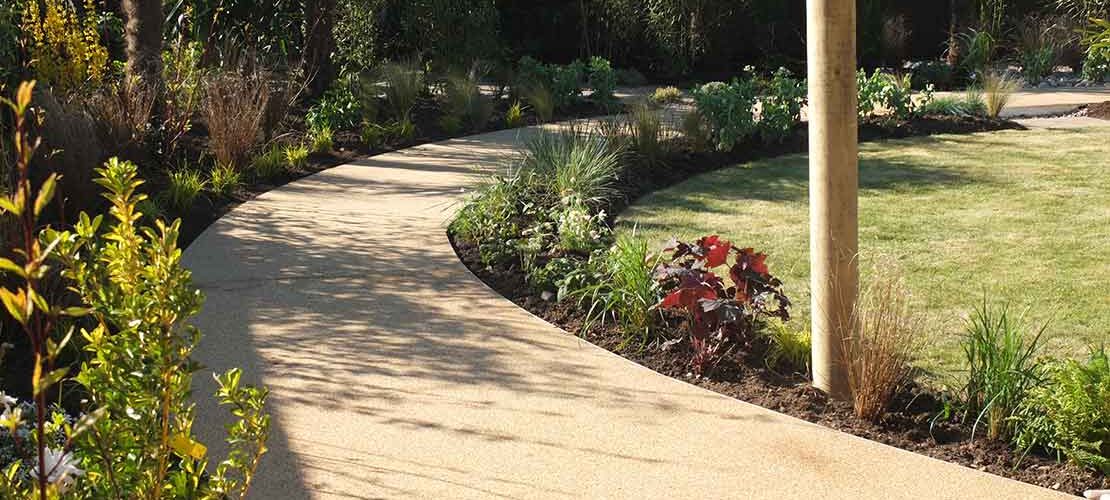How to Choose the Right Resin for Your Pathway Project
October 9, 2024

Creating a beautiful and durable pathway in your garden or outdoor area starts with selecting the right resin. With various types of resins available on the market, choosing the perfect one for your pathway project can be a daunting task. This article will guide you through the key factors to consider when selecting resin for your resin pathways, ensuring you make an informed decision that aligns with your aesthetic preferences and practical needs.
1. Understanding Different Types of Resin
Before diving into specifics, it’s essential to understand the different types of resins commonly used for pathways:
- Epoxy Resin: Known for its durability and strength, epoxy resin is resistant to chemicals, UV light, and temperature fluctuations. It’s a popular choice for high-traffic areas due to its excellent bonding properties and longevity.
- Polyurethane Resin: This type of resin offers flexibility and excellent weather resistance. Polyurethane is ideal for outdoor applications as it can withstand moisture and UV exposure, making it a good option for pathways that may experience varying weather conditions.
- Acrylic Resin: While not as durable as epoxy or polyurethane, acrylic resin is lightweight and dries quickly, making it suitable for DIY projects. It’s often used for decorative pathways due to its vibrant color options but may require more frequent maintenance.
2. Consider Your Climate
The climate in your area plays a significant role in determining which resin is best suited for your pathway:
- Hot and Sunny Climates: If you live in a region with intense sunlight, choose a resin that offers UV resistance, such as epoxy or polyurethane. These resins will help prevent fading and degradation over time.
- Cold and Wet Climates: In areas prone to rain, snow, or frost, opt for resins that are waterproof and resistant to temperature changes. Polyurethane resins are particularly effective in these conditions due to their flexibility and moisture resistance.
- Variable Climates: If your region experiences fluctuating weather conditions, consider a hybrid resin system that combines the best properties of multiple resins for enhanced durability and versatility.
3. Assessing Pathway Traffic and Usage
Think about how your pathway will be used. Will it experience heavy foot traffic, or is it primarily for decorative purposes? The type of resin you choose should align with the expected usage:
- High Traffic Areas: For pathways that will see frequent use, such as those leading to entrances or garden features, choose a resin with high durability, like epoxy or polyurethane. These resins can withstand wear and tear while maintaining their appearance.
- Light Traffic Areas: If the pathway is primarily for aesthetic purposes or will only see occasional foot traffic, you can opt for lighter resins like acrylic. While they may not be as durable, they can still provide a beautiful finish.
4. Choosing the Right Color and Finish
The visual aspect of your pathway is crucial for enhancing your outdoor space. Consider the following when selecting the color and finish of your resin:
- Color Selection: Resin comes in a variety of colors, so think about the overall aesthetic you want to achieve. Light colors can make your pathway feel larger and brighter, while dark shades can add elegance and sophistication.
- Textured vs. Smooth Finish: A textured finish can provide better traction, making it a safer option for pathways, especially in wet conditions. Smooth finishes are easier to clean but can be slippery when wet, so choose based on your specific needs and preferences.
- Customizable Options: Some resins allow for customization, such as incorporating decorative aggregates (like stones or glass) into the mix. This can add visual interest and uniqueness to your pathway.
5. Budget Considerations
Your budget will also play a significant role in the type of resin you choose:
- Cost of Materials: Epoxy resins tend to be more expensive than acrylics, but their durability may save you money on repairs and replacements in the long run. Determine what fits within your budget while considering the lifespan and maintenance needs of the materials.
- Installation Costs: If you’re planning a DIY project, factor in the costs of tools and additional materials required for installation. Professional installation may also be necessary for certain resins, so get quotes and assess whether this fits within your budget.
6. Consulting Professionals
If you’re still unsure about which resin is best for your pathway project, consider consulting with professionals. They can provide insights based on your specific needs, local climate conditions, and design preferences. Look for local contractors or suppliers with experience in resin installations to gain valuable advice.
Conclusion
Choosing the right resin for your pathway project is a crucial step in creating a beautiful and functional outdoor space. By understanding the different types of resin, considering your local climate, assessing traffic levels, and evaluating aesthetic preferences and budget, you can make an informed decision that will lead to a successful pathway installation. Whether you choose a durable epoxy, a flexible polyurethane, or a lightweight acrylic, the right resin will enhance the beauty and functionality of your garden for years to come.